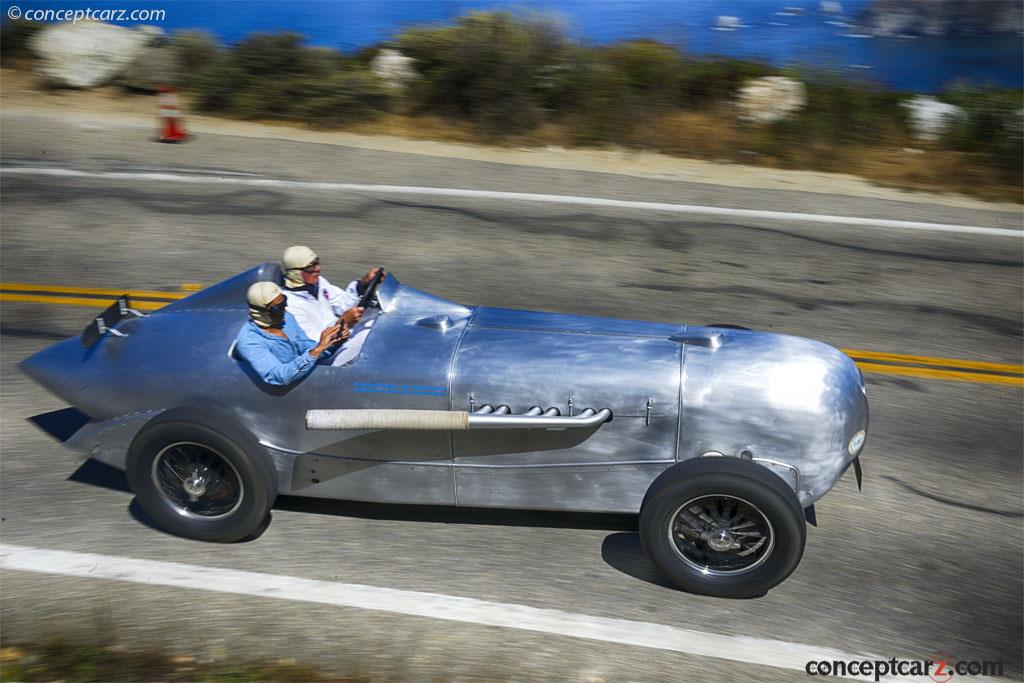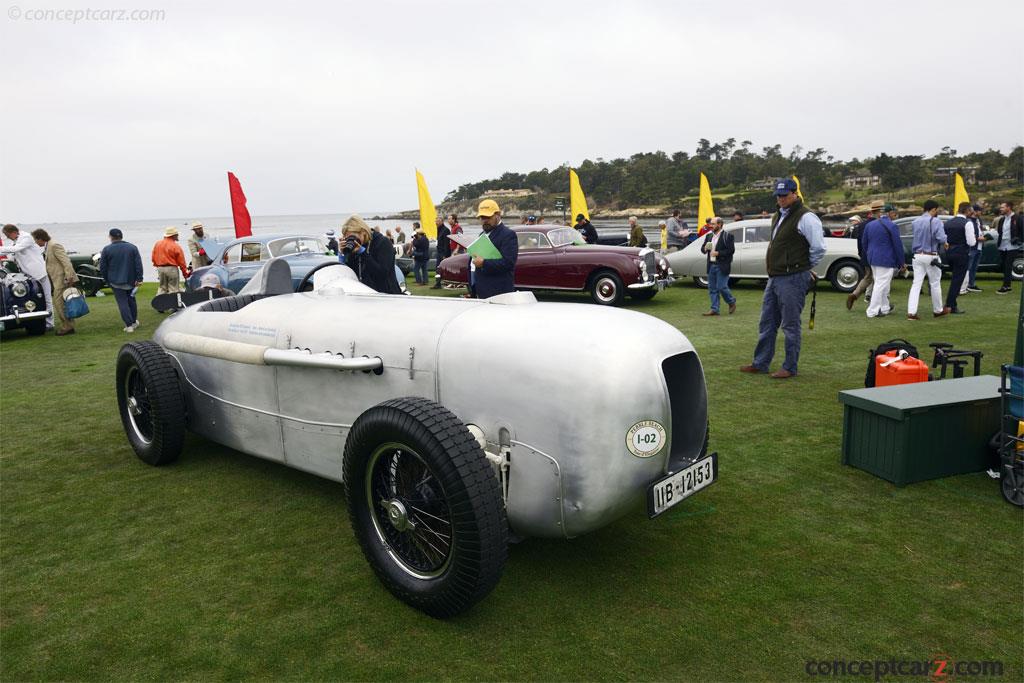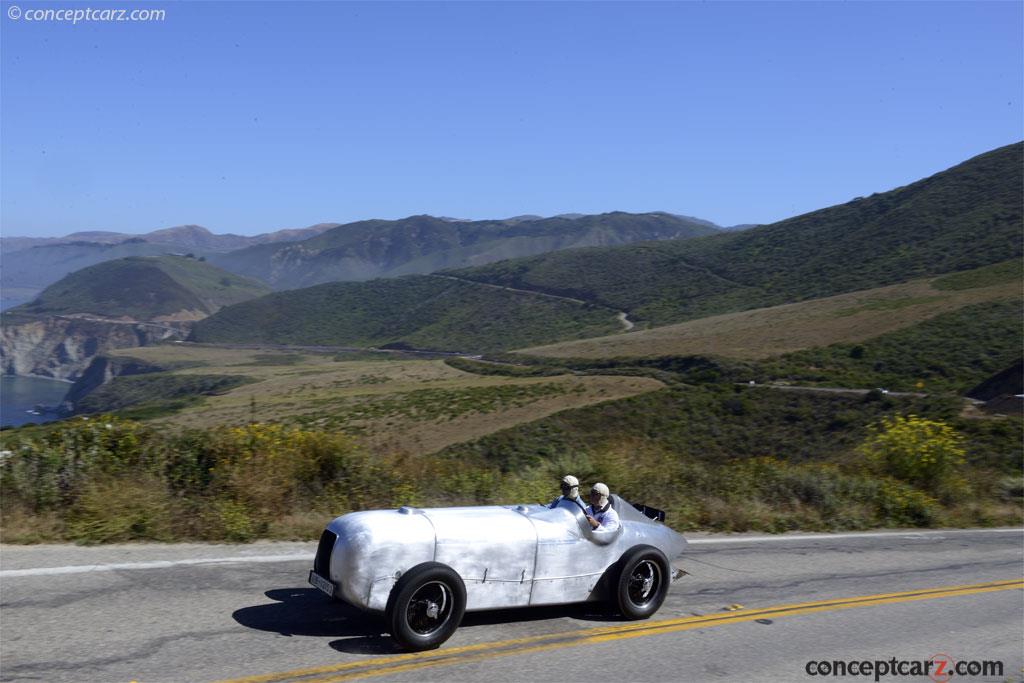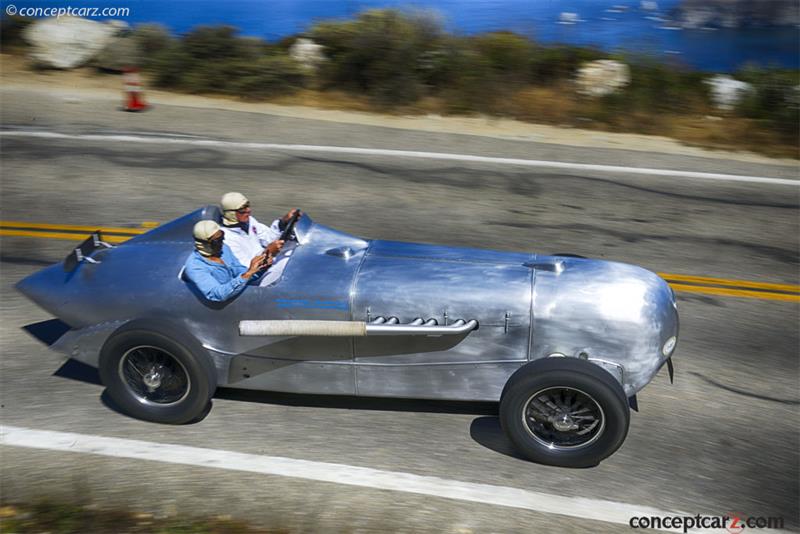1932 Mercedes-Benz SSKL Navigation
Mercedes quickly established a reputation for its racing prowess by winning the French Grand Prix in 1914 followed by another victory at the Indianapolis 500 a year later. During World War I, they learned about and perfected the use of forced induction through the production of airplane engines. By the early 1920s the Roots-Type Supercharger was being used on all of their racing cars. 
Avus Race Car by Walter Vetter Karosserie
View info and historyDaimler-Motoren-Gesellschaft introduced the world's first supercharged production cars at the 1921 Berlin Auto Show, the 6/25/40hp and 10/40/65hp four-cylinder models. After Austrian designer Ferdinand Porsche arrived at the company in early 1923, he worked to further develop the blown four and eight-cylinder racers designed by Paul Daimler, and the 15/70/100hp and 24/100/140hp supercharged, six-cylinder production models that would debut at the Berlin Automobile Show in 1924. The company's efforts were rewarded with a victory at the Targa Florio in 1924. It was won a two-liter Grand Prix car with a twin-cam eight cylinder engine. After rule changes for the 1925 season, it became ineligible for competition. Daimler and Benz merged in 1926 followed by a reclassification of the cars to Types 400 and 630, powered by 4 and 6.3-liter six-cylinder engines (respectively). Both engines were fitted with a Supercharger which became engaged when the accelerator pedal was fully pushed into the floor. A completely new chassis was soon developed that took advantage of the potent powerplants. They were lower than the original K (for Kurz or Short) chassis and these cars became known as the S for Sport. An increase in displacement followed, to 6.7 liters. Horsepower rose to 225 bhp. In this guise, Rudolph Caracciola drove an example to victory at the Nurbrugring in 1927.The engine grew larger for the 1928 season, reaching a displacement size of 7096cc and receiving the 'ss' name. As like the cars that came before it, it was available for either the road or the track. A racing version driven by Caracciola won at the German Grand Prix.
Avus Race Car by Walter Vetter Karosserie
View info and historyLate in 1928, a shorter version was introduced for hillclimb races, called the ssK. Both the SS and ssK would race over the years that followed with considerable success, including a victory by Caracciola at the 1931 Mille Miglia. The fourth and finale S-series Mercedes was the SSKL (Super-Sport-Kurz-Leicht). This was a purpose built race cars powered by a 7.1 liter, six-cylinder engine that had a chassis that was drilled to reduce weight. A few examples were built in 1931 and at the end of the season, Mercedes-Benz was forced to withdraw from competition due to the economic crisis that plagued the world. It is estimated that 33 ssks were built and only a few ssKLs. Several of the cars were destroyed in period, due to accidents.
by Daniel Vaughan | Sep 2019

Avus Race Car by Walter Vetter Karosserie
View info and history

Avus Race Car by Walter Vetter Karosserie
View info and history
by Daniel Vaughan | Sep 2019
Related Reading : Mercedes-Benz SSK History
In 1928 the Mercedes SSK was introduced and commonly referred to as The Mighty Mercedes and The Fastest Sports Car in the World. The name SSK stands for Super Sport Kurz, German meaning short. The naming convention for the SSK typically has numbers associated with them, such as 700 and 710. This represents the engine capacity, 7.0 liter and 7.1 liter respectively. It used a modified version of....
Continue Reading >>
Continue Reading >>
- 1932 Mercedes-Benz SSKL Menu
- Article
- Image gallery
- Specifications
- Profiles
- Production figures
Mercedes-Benz
Similar Automakers
1932 Mercedes-Benz SSKL Vehicle Profiles
Recent Vehicle Additions
Related Automotive News

Sportiness In The Brand DNA: Game-Changer With Mercedes-Benz At Goodwood Festival Of Speed 2017
With a dozen racing cars and sporty vehicles from over 100 years, Mercedes-Benz Classic sums up the motto of this years Goodwood Festival of Speed Peaks of Performance – Motorsports Game-Changers celebrates competition vehicles that have written...

120 years of motor sport at Mercedes-Benz take centre stage at the Goodwood Festival of Speed 2014
Addicted to Winning at this years Goodwood Festival of Speed, Mercedes-Benz looks back on some fascinating racing victories of the last 120 years
The unique motor sport heritage of the Mercedes-Benz brand is being celebrated with an exclusive i...

Techno Classica 2014: more than 30 racing cars to celebrate 120 years of Mercedes-Benz motor racing history
Cars that were the heroes of magical moments put their stamp on this high-powered, most comprehensive show presentation
With more than 30 vehicles, Mercedes-Benz Classic presents motor racing history in all its unique breadth and depth
120 years o...

Goodwood Festival of Speed 2013: auction of Mercedes-Benz W 196 R one of highlights at world's 'largest motorised garden party'
Mercedes-Benz Classic presents great moments in motor-racing history at Goodwood
Motorsport festival celebrating its 20th anniversary
Auction of only privately owned post-war Silver Arrow by Bonhams sure to cause a stir
Stuttgart – This...

Mercedes-Benz Classic: Topics for 2013
The main topics
The tradition of the Mercedes-Benz S-Class
Mercedes-Benz Silver Arrows in the 1930s
Originals – authentic vehicles tell authentic stories
Classic vehicles kept in perfect condition with Mercedes-Benz Genuine Parts
Imp...





















